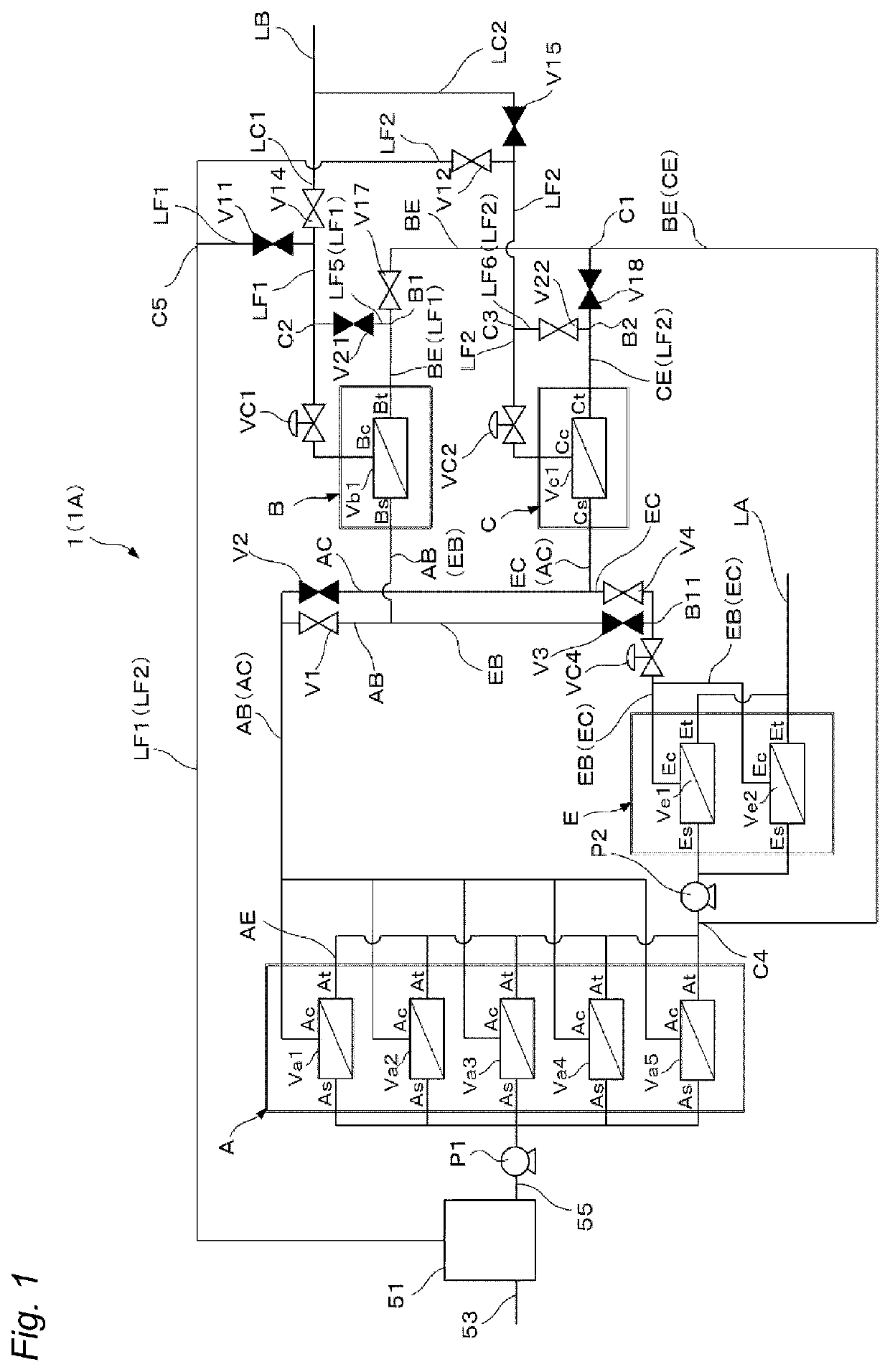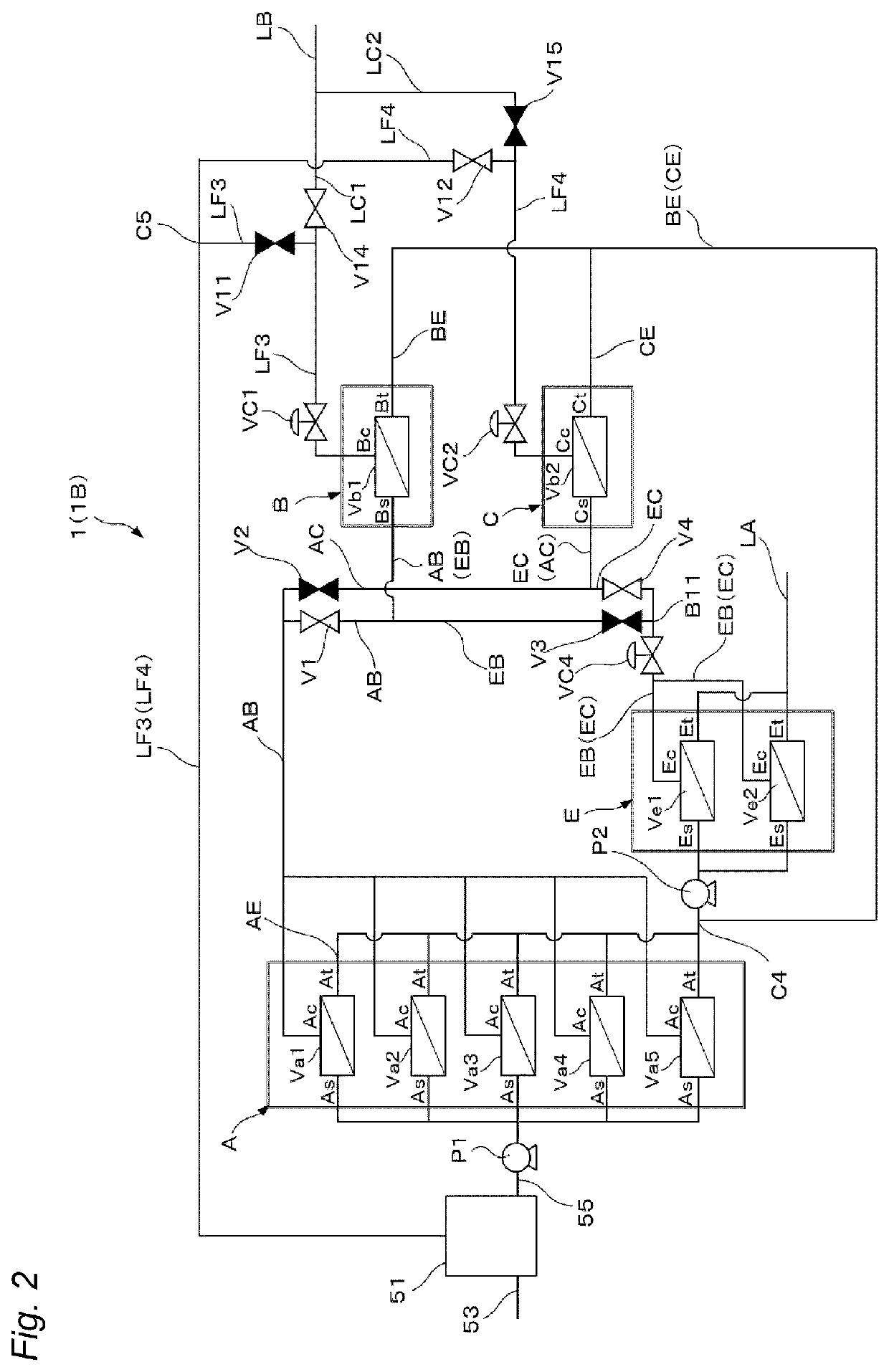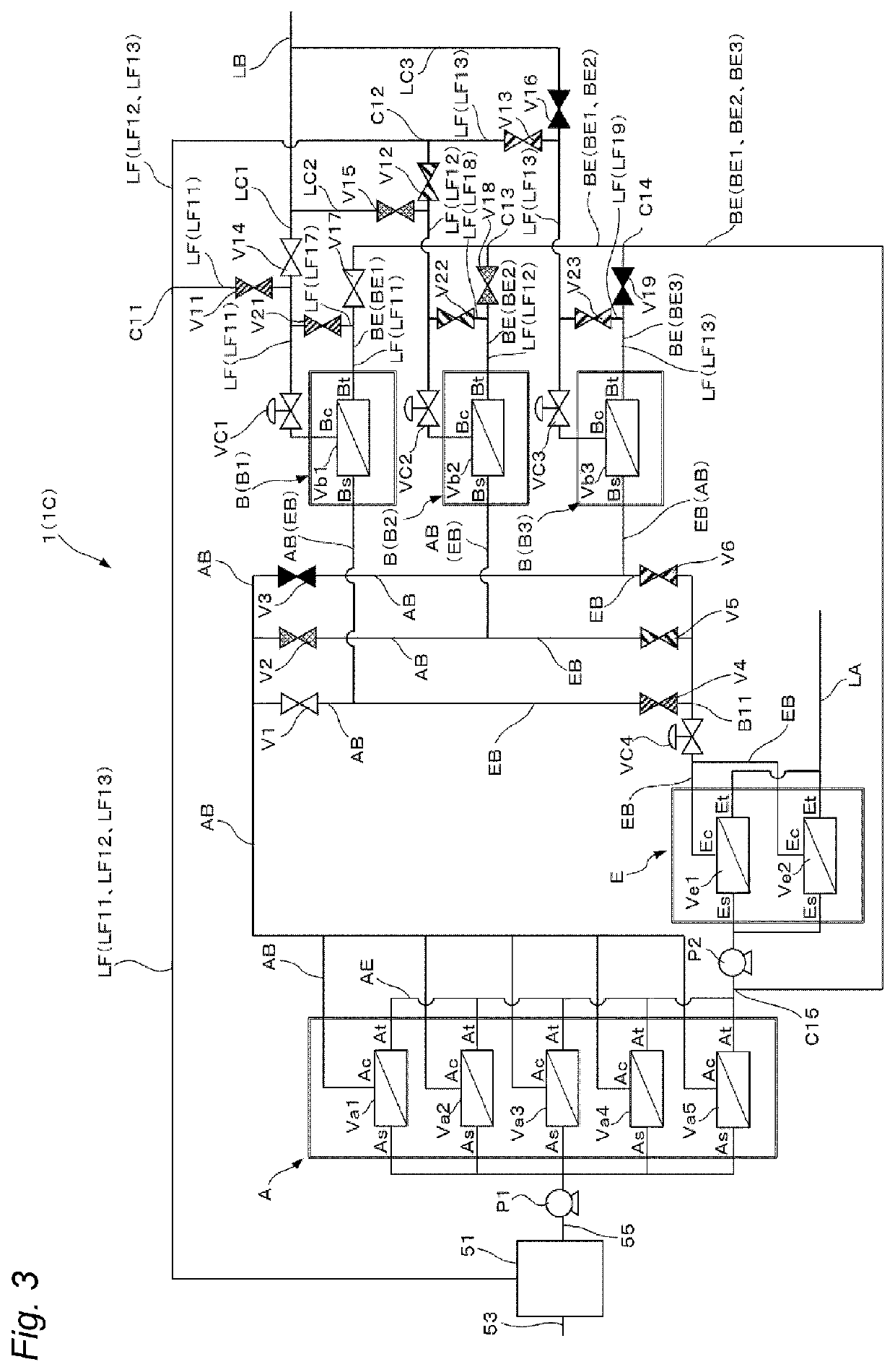Water treatment system and water treatment method
a water treatment system and water treatment technology, applied in water treatment multi-stage treatments, membranes, reverse osmosis, etc., to achieve the effect of efficient water treatmen
- Summary
- Abstract
- Description
- Claims
- Application Information
AI Technical Summary
Benefits of technology
Problems solved by technology
Method used
Image
Examples
example 1
[0285]In Example 1, a raw water having a Ca concentration of 20 ppm, a silica concentration of 15 ppm, an electrical conductivity of 200 μS / cm and pH=8.5 was subjected to an RO membrane treatment using the water treatment system 1A illustrated in FIG. 1. Regarding the RO membranes, ES20-D8 (trade name) manufactured by Nitto Denko Corp. was used. The recovery rate of the RO membrane device A was set to 50%, the recovery rate of the RO membrane device B was set to 50%, the recovery rate of the RO membrane device E was set to 90%, and the overall recovery rate of the system was set to 73%. The concentrated water from the RO membrane device A was supplied to the RO membrane device B, and the concentrated water from the RO membrane device E was supplied to the RO membrane device C. The permeated water from the RO membrane device B was caused to flow to the supply side of the RO membrane device E. The recovery rate of the RO membrane device C was set to 10% or less. The permeated water an...
example 2
[0286]In Example 2, the water treatment system 1A illustrated in FIG. 1 was used, hydrochloric acid was injected into the concentrated water from the RO membrane device E, and the pH of the concentrated water was adjusted to 5.5. Then, after the first connection line was switched to the second connection line, this concentrated water was supplied to the RO membrane device B, and the RO membrane device B was washed. Except for those, water flow was carried out under conditions similar to those of Example 1. That is, after a lapse of 200 h from the initiation of washing of the RO membrane device B, the line was switched again (switched from the second connection line to the first connection line), and a comparison was made between the amount of permeated water J of the RO membrane device B at the time of causing the concentrated water from the RO membrane device A to flow to the RO membrane device B and the initial (at the time of initiating operation) amount of permeated water J0 of ...
example 3
[0287]pH meters were installed at the supplied water and the concentrated water from the RO membrane device B, and the difference in pH was measured. PID control was performed from the difference between this difference in pH and the ideal pH difference at every lapse of washing time, and the injection amount of hydrochloric acid was controlled. Except for those, water flow was carried out under conditions similar to those of Example 2. That is, after a lapse of 200 h from the initiation of washing of the RO membrane device B, the line was switched again (switched from the second connection line to the first connection line), and a comparison was made between the amount of permeated water J of the RO membrane device B at the time of causing the concentrated water from the RO membrane device A to flow to the RO membrane device B and the initial (at the time of initiating operation) amount of permeated water J0 of the RO membrane device B. Furthermore, the system recovery rate was cal...
PUM
| Property | Measurement | Unit |
|---|---|---|
| electrical conductivity | aaaaa | aaaaa |
| pressure | aaaaa | aaaaa |
| electrical conductivity | aaaaa | aaaaa |
Abstract
Description
Claims
Application Information
 Login to View More
Login to View More - R&D
- Intellectual Property
- Life Sciences
- Materials
- Tech Scout
- Unparalleled Data Quality
- Higher Quality Content
- 60% Fewer Hallucinations
Browse by: Latest US Patents, China's latest patents, Technical Efficacy Thesaurus, Application Domain, Technology Topic, Popular Technical Reports.
© 2025 PatSnap. All rights reserved.Legal|Privacy policy|Modern Slavery Act Transparency Statement|Sitemap|About US| Contact US: help@patsnap.com



